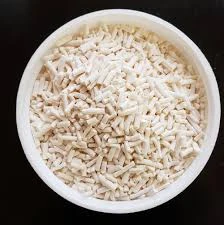
e621 food enhancer
Exploring the Role of E621 The Hidden Enhancer in Our Food
Food additives play a pivotal role in modern cuisine, enhancing flavors, preserving freshness, and improving the overall sensory experience of the dishes we cherish. Among these additives, E621, also known as monosodium glutamate (MSG), stands out as a topic of both culinary enthusiasm and controversy. This article delves into the nuances of E621, its uses, benefits, and the debates surrounding its consumption.
Monosodium glutamate is a sodium salt of glutamic acid, an amino acid naturally found in many foods, including tomatoes, cheese, and mushrooms. Renowned for its ability to amplify umami—the fifth basic taste that often evokes savory flavors—E621 has found its way into a myriad of culinary preparations ranging from snacks and instant noodles to sauces and processed meats. Its discovery in the early 20th century by Japanese chemist Kikunae Ikeda marked a significant breakthrough in flavor enhancement, transforming the way we perceive and enjoy food.
Exploring the Role of E621 The Hidden Enhancer in Our Food
Moreover, MSG is celebrated for its versatility. It is used across various cuisines, from Asian to Western dishes, and its ability to blend seamlessly into a wide array of food products is unmatched. This adaptability has made E621 a staple in restaurants and homes alike, allowing culinary enthusiasts to experiment and create bold flavors with ease.
e621 food enhancer

However, the use of E621 has not been without controversy. Some consumers express concerns about potential health risks associated with MSG, fearing it may lead to adverse reactions known as “Chinese Restaurant Syndrome,” a term coined in the late 1960s. Symptoms rumored to be linked to MSG include headaches, flushing, sweating, and heart palpitations. Despite these claims, extensive scientific research has largely found E621 to be safe for consumption within normal dietary levels, and the Food and Drug Administration (FDA) has classified it as “generally recognized as safe” (GRAS).
In light of ongoing debates, it's crucial for consumers to make informed choices about their dietary habits. People with specific sensitivities or allergies may wish to limit their intake of MSG or choose products labeled as MSG-free. Reading ingredient lists and understanding food labels can empower individuals to prioritize their health while still enjoying flavorful meals.
The perception of E621 is also shifting due to the rise of the clean eating movement, which emphasizes natural ingredients and minimal processing. As a response, some food manufacturers are now formulating products with alternative flavor enhancers, leaning towards more natural sources of umami like mushrooms, tomatoes, and fermented foods.
In conclusion, E621, or monosodium glutamate, serves as a powerful tool in the culinary world, amplifying flavors and enhancing the dining experience. While discussions about its safety and health effects continue, it remains an integral part of food culture globally. Understanding how and why we use enhancers like E621 allows for more conscious decision-making in our diets, helping us balance flavor enjoyment and health. The key lies in moderation and awareness, giving us the freedom to enjoy the complexities of taste without compromise.
-
Understanding Synthetic Rubber OptionsNewsApr.27,2025
-
Trichloroisocyanuric Acid: Essential for Clean and Safe WaterNewsApr.27,2025
-
Sodium Dichloroisocyanurate: Key to Safe Water TreatmentNewsApr.27,2025
-
Sodium Acid Pyrophosphate: Essential in Modern Food ProcessingNewsApr.27,2025
-
Essential Water Treatment ChemicalsNewsApr.27,2025
-
Denatured Alcohol and Its Industrial UsesNewsApr.27,2025
-
The Versatile Uses of Sodium BicarbonateNewsApr.24,2025
Hebei Tenger Chemical Technology Co., Ltd. focuses on the chemical industry and is committed to the export service of chemical raw materials.
-

view more DiethanolisopropanolamineIn the ever-growing field of chemical solutions, diethanolisopropanolamine (DEIPA) stands out as a versatile and important compound. Due to its unique chemical structure and properties, DEIPA is of interest to various industries including construction, personal care, and agriculture. -

view more TriisopropanolamineTriisopropanolamine (TIPA) alkanol amine substance, is a kind of alcohol amine compound with amino and alcohol hydroxyl, and because of its molecules contains both amino and hydroxyl. -

view more Tetramethyl Thiuram DisulfideTetramethyl thiuram disulfide, also known as TMTD, is a white to light-yellow powder with a distinct sulfur-like odor. It is soluble in organic solvents such as benzene, acetone, and ethyl acetate, making it highly versatile for use in different formulations. TMTD is known for its excellent vulcanization acceleration properties, which makes it a key ingredient in the production of rubber products. Additionally, it acts as an effective fungicide and bactericide, making it valuable in agricultural applications. Its high purity and stability ensure consistent performance, making it a preferred choice for manufacturers across various industries.











